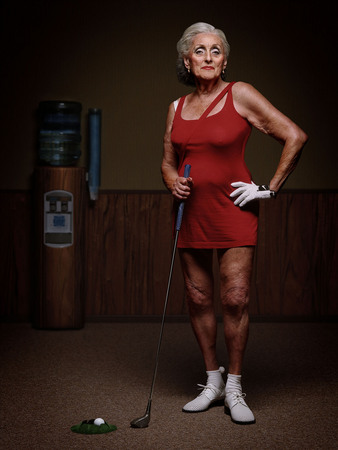Personal exhibition







Erwin Olaf. Chill Out. From the series “Paradise The Club”. 2001. © Erwin Olaf
Erwin Olaf. Matt. From the series “Paradise Portraits”. 2001-2002. © Erwin Olaf
Erwin Olaf. Thomas. From the series “Paradise Portraits”. 2001-2002. © Erwin Olaf
Erwin Olaf. Separation 1. From the series “Separation”. 2002-2003. © Erwin Olaf
Erwin Olaf. Isabella R. From the series “Mature”. 89. 1999. © Erwin Olaf
Erwin Olaf. Dirty Denim. From the series “Diesel”. 1998. © Erwin Olaf
Erwin Olaf. Di. From the series “Royal Blood”. 1999-2000. © Erwin Olaf
Moscow, 18.03.2005—10.04.2005
exhibition is over
Moscow Museum of Modern Art
17 Ermolaevsky lane (
www.mmoma.ru
Share with friends
Project presented by Erwin Olaf Studio, in cooperation with Groninger Museum, The Netherlands
With the support of the Royal Netherlands Embassy
For the press
Erwin Olaf has been professionally active for twenty-five years and in this period he has succeeded in evolving from a participating photographer to a director who creates his own reality.
Olaf is a master in generating his own world, whether this be his autonomous photographic series, grandiose parties, or film projects. With these, Olaf manages to produce fictitious yet convincing images of bygone days, fairytales and dreams, populated by historical figures, elves, dwarves, lunatics, and god knows who.
His aim is perfection, which can only be realised by means of great commitment and application of energy, time and time again. Olaf makes severe demands on his associates, both under the lights and in the shadows, and yet everyone is eager to work with him because he is generous by nature and allows everyone to share his success.
Kees van Twist, Director of Gronninger Museum
Mature — 10 Millennium Pin-Ups 1999
Erwin Olaf conceived the idea for Mature after seeing a book of American pin-ups dating from the 1950s. Imagine that, during the shooting session, the photographer ‘just’ went out to buy a packet of cigarettes and came back forty years later to find the situation exactly the same except for the fact that the model has become forty years older. Olaf came into contact with the women he wanted to photograph by placing an advertisement. He did everything possible to ensure that they felt as sexy as possible, and was delighted when their gaze expressed yearning, (self-)confidence and complete surrender to the camera. The photographs have been digitally processed: the nails were varnished a more prominent red and their figures became more taut, but the skin remained unchanged. Olaf’s intention with this series is to challenge the use of retouches that are so characteristic of glamour photography in order to remove wrinkles, spots and other imperfections. This kind of ideal, reworked beauty is already evident enough in the media.
Royal Blood 2000
The images, in chronological order, represent the following historical figures: Julius Caesar, the Roman emperor, murdered after a conspiracy; Poppaea, the jealous and vindictive wife of the equally harsh emperor Nero, who killed her in a fit of anger by kicking her in the abdomen when she was pregnant; Marie-Antoinette, who, after the French Revolution, ended up under the guillotine in 1793; the eccentric Bavarian king Ludwig II who drowned in mysterious circumstances; Elisabeth, or Sissi, Empress of Austria and Queen of Hungary who was stabbed by an anarchist; the Russian Tsarina Alexandra who was executed along with her children by the Bolsheviks in 1918; the tragic widow Jacqueline Onassis Kennedy who is portrayed ‘before’ and ‘after’ the fatal shots in Dallas in 1963; and Lady Di with, on her arm, the logo of the car in which she crashed while fleeing from the press photographers. Olaf worked exclusively with blond, blue-eyed teenagers on this series, and gave them all expensive jewellery and accessories. The blood and the wounds were actually photographs of butcher meat, boosted with artificial blood, which were ingeniously assembled into these images.
Paradise The Club 2001
The title Paradise The Club refers directly to the Amsterdam pop temple Paradiso and certainly not to the Christian paradise — although this was actually where original sin arose and human misery on earth was initiated. The setting is a copy of the basement in Paradiso, installed in his own studio. Olaf had conceived the idea for this series while in Paradiso, at a large-scale party that he had organised around the ‘circus’ theme at the end of 2000. Most people were dressed as clowns and, combined with acts such as a majorette corps of transvestites, a transected dwarf and trained elephants, this offered such a mad and absurd picture that Olaf wished to compound this in a photographic series. A direct model for this series was the painting The Rape of Hippodameia by Rubens in the Prado, which depicts the mythological story of Hippodameia, who was assaulted by a Centaur during her marriage, after which the festivities ended in a bloody conflict between the Centaurs and the Lapiths.
Separation 2002/2003
After the baroque and garish Paradise series, Erwin Olaf created Separation, which is his most introverted series until now. The characters are clad in black rubber clothing from top to toe, but any association with kinky sex is totally misplaced: the clothing seems to be symbolic of the frozen isolation of the figures. Separation is also the title of a short film that Olaf made in 2003. The boy is playing while his mother is busy in the kitchen. The television is on. Father comes home, they sit down at the table for a meal, and shortly afterwards the news mentions something that attracts their interest. All three sit down in front of the screen. The word ‘Separation’ appears on the screen and the film begins all over again.
Ruud Schenk, Curator of modern art, Groninger Museum




